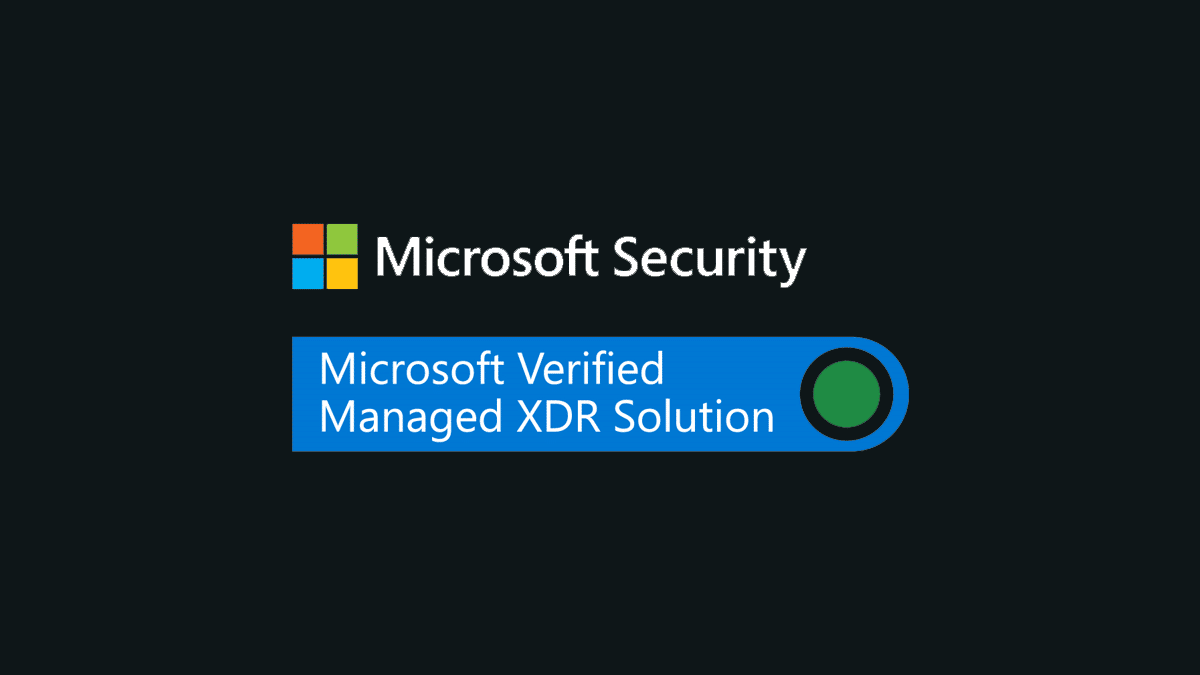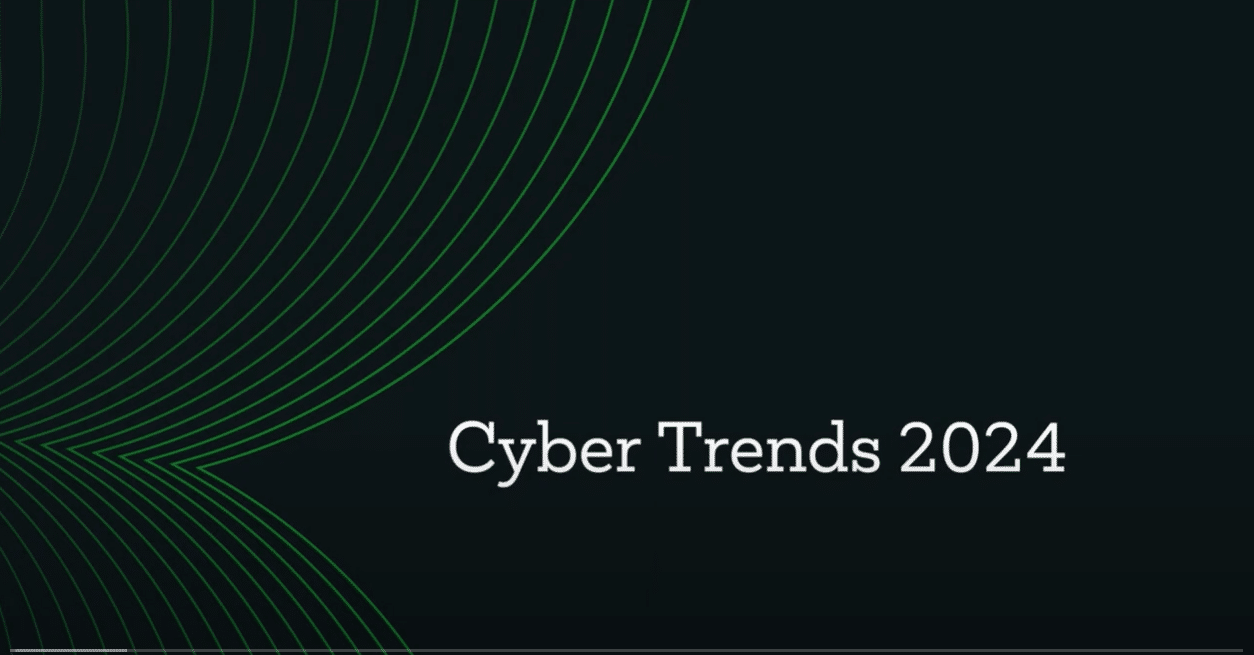From the disruptive impact of generative AI to the further industrialisation of cybercrime. 2023 was a year of significant change for cyber security. So how will this shape 2024? Get the thoughts from two of Microsoft’s most senior cyber specialists.
In the opening to the 2023 edition of their Digital Defence Report1, Microsoft refers to cyber security as the defining challenge of our time.
A quick scroll through some of the stats makes it easy to see why:
4,000 password attacks per second.
200% increase on human-operated ransomware attacks.
156,000 business email compromise (BEC) attacks per day.
1,700 DDoS attacks per day.
Not to mention the continued industrialisation of global cybercrime (like DDoS-for-hire or phishing-as-a service), the continued rise of state-sponsored cyber attacks, and the explosion of Artificial Intelligence (AI).
I recently had the good fortune to speak with Microsoft’s Chief Security Advisor, Lesley Kipling, and Paul Kelly, Director at Microsoft’s Business Security Group. They offered their thoughts on the trends, challenges, and technology developments we can expect to see in the next twelve months.
Highlights include:
The key challenges organisations will need to address in 2024.
Why AI is a key battleground between attack and defence.
The categories which continue to be the most vulnerable to attack.
How machine learning is bridging the cyber security skills gap.
Why the ‘Secure Future Initiative’ aims to shape the future of cyber security.
Why getting the basics right is still the most important part of any security posture.

The ultimate guide to Microsoft security **New for 2024**
Cut through the complexity. Master Microsoft security.
Key talking points
The cyber trends that will shape the year ahead (and beyond).
Understanding today to prepare for tomorrow
Reflecting on the cyber security picture over the past year, Lesley and Paul both agreed that by understanding the recent trends helps identify what we need to be aware of in the year ahead.
Such as:
40% of attacks are targeted at identity.
25% of attacks are ransomware.
25% of attacks are phishing related.
70% attacks now aimed towards smaller businesses.
$4.89 million is the average cost of BEC attacks.
33% of crime in England and Wales is computer misuse.

There was a 200% increase in ‘hands on keyboard’ human-operated ransomware attacks in 2023, and that’s going to continue.
Cybercrime’s continued industrialisation
Cybercrime is big business.
And it’s an ‘industry’ that’s continuing to expand.

If cyber crime were a country, it would have the 5th largest GDP in the world.
Paul highlighted the split in the cybercrime ‘community’.
On the one side, the activity of nation state actors, increasingly pinpointing attacks towards critical national infrastructure (CNI). On the other, the cybercriminals, who take a more opportunistic approach.
Something that organisations of all sizes need to be aware of when considering their own cyber resilience.

Cyber criminals look for the path of least resistance, targeting organisations with the lowest security posture.
The transformative impact of AI
It’s no secret, of course, that looming large over the landscape is artificial intelligence (AI), with 2023 feeling like a pivotal moment in technology development.

AI is the hot topic right now. We’re already seeing threat actors using AI to hone their craft.
However, it’s the opportunities presented by AI that both Lesley and Paul were keen to highlight.
Pointing to Microsoft’s work with machine learning and large language models over the years, and the “phenomenal power they can leverage to tip the balance in the favour of defenders.”
Strengthening posture and closing the skills gap with Security Copilot
Microsoft Security Copilot was officially unveiled at the Ignite event in November 2023, and is due to be made generally available in 2024.
Both Lesley and Paul were eager to point out the possibilities.

The ability to use large language models is going to be something that’s defining for us as defenders.
“Security Copilot is going to help us hugely in terms of Security Operations (SOC),” Lesley said. “Instead of focusing on all of the little events and alerts that slow us down from a defender perspective, we can now pull this information together and look at just one incident.”
Lesley was also very keen to point to the opportunities Security Copilot will offer in bridging the skills gap in IT and cyber security.
“We can democratise skills down to people who potentially haven’t been in the industry for as long as I have. It means not having to use KQL to query for signals, but instead ask in a natural language to find a specific piece of malware, or query what a signal means.”
Challenges for organisations in 2024 and beyond
Both agreed that the challenges organisations face today around balancing security with productivity will continue into the foreseeable future.
Namely, maintaining cyber resilience in the face of:
Budget constraints
Skills gaps
Increasing complexity of cyber threats
But while it’s easy to be drawn down the rabbit-hole of negativity, there is a much more positive side to this cyber-coin.

We’re really passionate about taking enterprise-level defence capability and making that available to small and medium organisations.
Meeting the challenges head-on
Lesley talked about Microsoft’s announced plans for organisations to be able to tap into its vast scale of machine learning and threat intelligence and empower SOCs to offload as much work as possible.
Relieving the strain on under-resourced teams.
Adding to this, Paul highlighted the release of Microsoft’s automatic attack disruption feature to business premium licence holders.
They also reemphasised the mantra of doing more with less and the benefits of unified security systems.
A recognition that many organisations have too many disparate solutions across their estate. Which sends costs spiralling; creating gaps and vulnerabilities in their security posture.

Sentinel will continue to be the place where you pull through both Microsoft and third-party signals, so you don’t have to go and hunt in different locations.
The Secure Future Initiative (SFI)
Announced at Ignite, SFI reflects Microsoft’s culture of a security-first mindset in the software development lifecycle, refreshed for the AI age.
It comprises three steps:
- Deploy AI in defence of customers, citizens, organisations, and nation states.
- Double down on security across every stage of the development lifecycle.
- Cooperation with public sector, private sector, and across the industry.

Microsoft are tracking 300 threat actors, up from 200 last year, and working with law enforcement to actively take them down and disrupt their infrastructure.
Why it’s still vital to get your basics right
With the right approach to cyber hygiene, and applying the fundamentals of good security, organisations can protect themselves against 99% of attacks.
Get the right identity platform in place.
Enforce multi-factor authentication (MFA).
Adopt a zero trust approach.
Deploy extended detection and response (XDR) and anti-malware.
Maintain up-to-date patching.
Protect your data state, and ensure access and identity lifecycles are managed correctly.
Robust security remains vital to mitigate the devastating costs that come with a poor attack response.
But this is heightened further with the emergence of AI, as organisations look at ways to leverage its potential in their sectors.

Protect yourself for today by doing the fundamentals, and you put yourself in the best place to tap into what AI’s innovations can do for your business.
Clearly, 2023 will be remembered as a breakthrough for AI into popular use. And it’s a breakthrough that promises to have significant ramifications for the year ahead, and the years to follow.
Find out more about what Lesley and Paul have to say about the trends and predictions for 2024 by watching the full video. ↑↑

The ultimate guide to Microsoft security **New for 2024**
Grab your Microsoft security ‘cheat sheets’. Discover how to:
- Simplify security across your multi-cloud estate
- Easily protect identities, devices, and data

Great emails start here
Sign up for free resources and exclusive invites
Subscribe to the Kocho mailing list if you want:
- Demos of the latest Microsoft tech
- Invites to exclusive events and webinars
- Resources that make your job easier

Don't Miss
Great cloud security resources

Microsoft Tech Update: Security Special
Gain up-to-date knowledge on the features and functionality of Microsoft’s key cloud, identity and security technologies.

Kocho achieves Microsoft verified MXDR solution status

Hallo Healthcare Group: A seamless cloud migration and security infrastructure overhaul



























Got a question? Need more information?
Our expert team is here to help.






